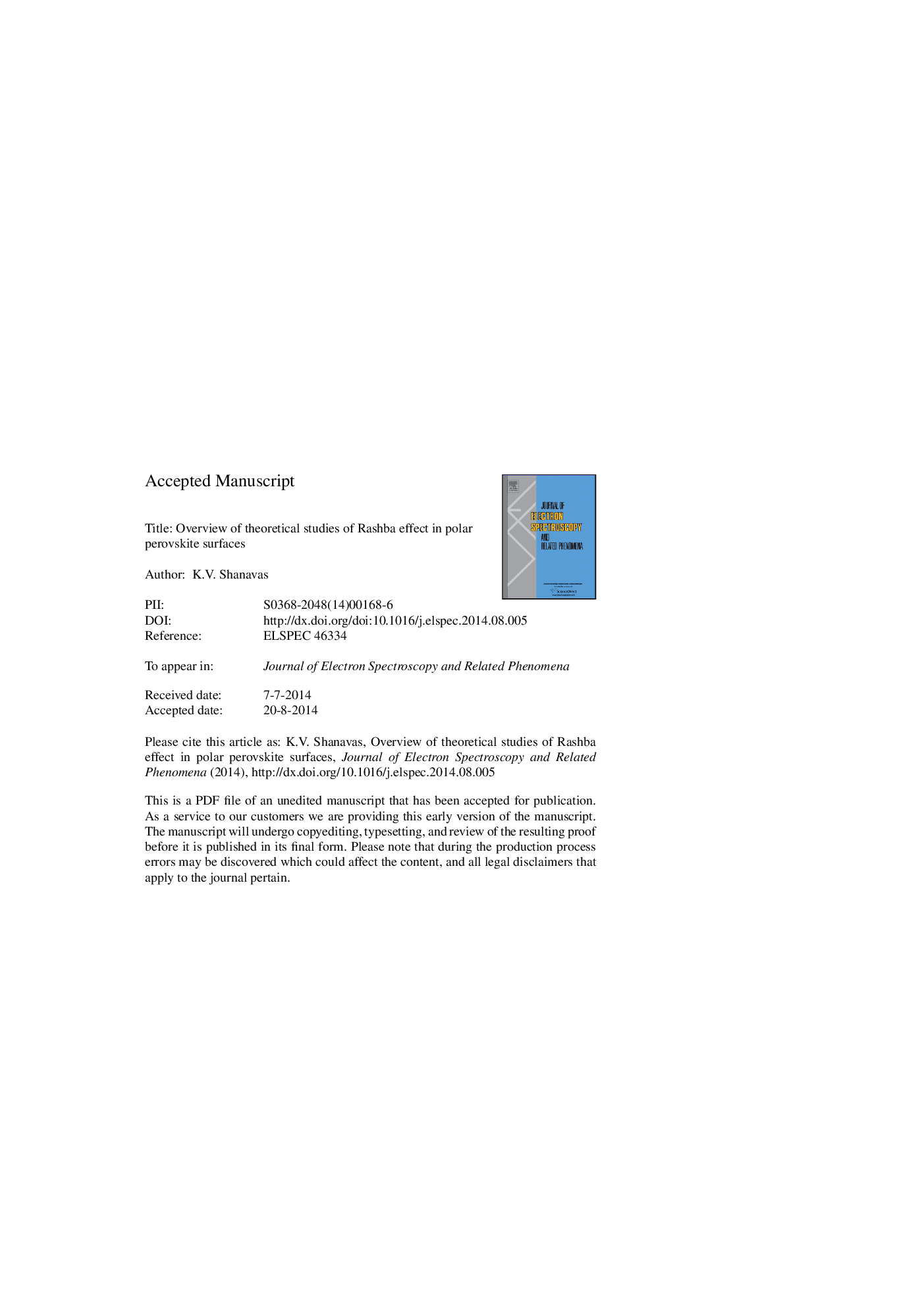| Article ID | Journal | Published Year | Pages | File Type |
|---|---|---|---|---|
| 5395771 | Journal of Electron Spectroscopy and Related Phenomena | 2015 | 20 Pages |
Abstract
Theoretical studies with the help of first-principles electronic structure calculations and tight-binding based Hamiltonian models aimed to understand the Rashba effect in the 2D electron gas at the surfaces and interfaces of polar perovskite oxides are discussed. First-principles calculations on a slab of KTaO3 show that the spin-splitting is orbital dependent and is greatly suppressed by the lattice relaxation close to the surface. However, the electron gas is amenable to tuning by external potentials perpendicular to the surface and can be used to control Rashba splitting. Construction of a minimal model Hamiltonian to study d orbitals under uniform electric field is explained. The potential introduces new matrix elements between orbitals by breaking the symmetry and distorting the lattice. When coupled with spin-orbit interaction, this results in lifting the spin degeneracy.
Related Topics
Physical Sciences and Engineering
Chemistry
Physical and Theoretical Chemistry
Authors
K.V. Shanavas,
